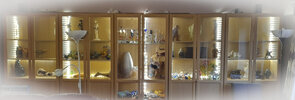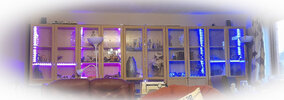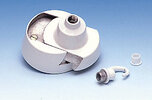I am myself looking on better control of lights, in the main we walk into a room so want a switch at the entrance, but we also as evening arrives or we change what we are doing want to change lighting levels.
However how to change lighting levels depends on many things. Since I have Nest Mini's these seem to be an ideal way to adjust light when already relaxing in the room, my son uses Alexa which is basic same idea, remote controls are better than using the phone as anyone can use them, but cost is also a consideration, at around £9 each for the cheapest smart bulb, having eight of them gets expensive, so a smart switch is likely cheaper, but that does not allow you to adjust colour, same applies dimming a bulb, using smart bulbs you can also adjust colour temperature which you can't do with a smart dimmer or switch.
I used a smart relay with the intention of using a remote control (zigbee) but found the remote would work bulbs but not relay, the relay should mean I can use wall switch, phone, or voice, but the wall switch seems to have moods, will work one day then not the next.
Watching the TV a Freddy Boswell look alike switches lights on/off by having a smart meter fitted, and clapping hands, don't think that will really work, and if it did any loud noise could also switch lights on/off, but the point is there are many misleading adverts saying what products will do. I am looking at Tapo (TP Link) at the moment, as claims seem good, having buttons to turn lights on/off seems good, but as yet not tried, had Energenie MiHome which 3 or of 5 have failed, so it gets expensive, I think the problem was down to having no neutrals and the small current always going through the bulbs, and the Tapo light switches have batteries instead, so likely better.
The same problem with dimming switches with no neutral, BA22d bulbs have worked for me OK, but G9 was a night mare, and GU10 also had some problems, the main thing is flicker, there are ways around not switching off, but even with tungsten bulbs flicker with dimming switches could be a problem, the coiled coil has some inductance which messes up the switch, and with LED it can affect some people but not all, I swapped my living room bulbs and daughter has stopped complaining, but since they did not give me headaches, it was a bit hit and miss. Not complaints as yet from the use of smart bulbs.
All I can do is wish you luck, as it seems more down to luck than design as to if they work as one designs them to. And after doing a lot of work to fit under counter lamps, I have never once seen my wife use them, and they use voice control she does not even have to walk to the switch.
The display cabinet lights have worked well,

can also change colour, but they give the extra light when needed that end of the room, without looking like an after thought, which they are, the room lighting is inadequate for such a large room, but getting extra ceiling lights installed will be a big job. There is around 30 watt of LED lighting in those cabinets if turned up full, but in the main set for mood lighting,

one of the advantages of using smart lights, it can change what it does. I will however admit the first attempt with Ikea lamps was a failure.
And this is a problem, I have a draw full of bulbs, either still in packets, or only used for a short time, so nearly new, which were too small or replaced with smart versions, or had a shimmer when used with smart switch, or bought while we could still get tungsten for lamps that can't use LED, or removed when better lamps fitted. The experts on lighting get paid a lot of money to get it right first time.






